|
|
JOIN THE LIST
Use this link
to add your email address to the RARWRITER Publications mailing list
for updates on activities associated with
www.RARWRITER.com and
Revolution Culture
Journal.
THIS WEEK'S RAR
TUNES:
Listen by clicking on the links or covers below.
Yours truly is offering up a little
Jazz-Pop confection, with all admiration for the ancient Greeks, who
knew a thing or two about winging it philosophically.
Use this link or click on
poor Democritus below to hear "A Simple Explanation".
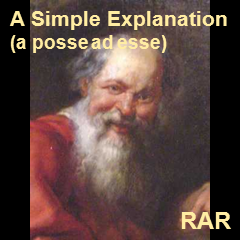
Oh perversity at the county fair! I'm
sure involvement with the Future Farmers of America has ruined more than
a few young boys, what with all the glamour and all, and the exposure to
breeding stock...
Use this
link or click on the good people below to hear another in a nauseating
string of RAR originals - "(You Do) That Thing That Sets Me Free".
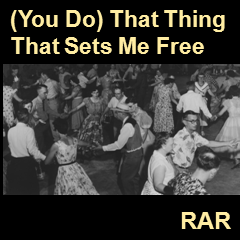
Yours truly has been all about myself of
late, which is why I am behind on record reviews and most everything
else, but I do have a new batch of recordings, starting with
"Betty from Memphis", a tribute to stable types such as
my actual Aunt Betty (Olita) in Memphis (not shown here), as well as to
all those weary road warriors out there playing the soundtracks to
everybody else's movies.
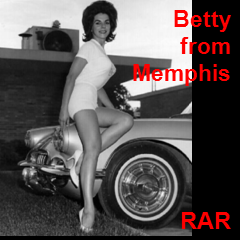
Call it
"creative destruction", like Mitt Romney does.
"Until Sam
Walty's Dead" is a cowboy yarn about a villain -
personified by the late and wonderful Warren Oates (below) - who
has left an unfortunate legacy for himself (see chorus...). Walty is my
metaphor for early 21st Century predatory capitalism, a force that must
be dealt with so that honest souls can carry on.
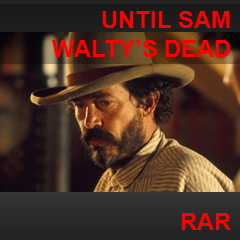
Glory be unto Angie Omaha, whoever
she is, pictured below on the cover to my next- generation version of
"The Glow
of Your Dark Eyes", introduced several years back
as a tune about "the dark side of loving a dark soul". Our girl Angie
may not let me exploit her in this way for long, but as long as she does
isn't she perfect? I mean, for this song?
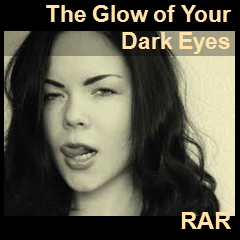
"Just Eleven
Minutes" comes from a few years back, and from the same
box as "The Glow of Your Dark Eyes", but the versions provided below
come much closer to my ambitions for this story of a booze-fueled
cuckold speeding toward a crime of passion and revenge. The song is
almost entirely played around the single chord of E, with occasional
transitions through A-B, for those keeping score. The "psycho" version
was the original inspiration, but the Nashville chicken-pickin' version
has some nice qualities. Unfortunately it also shows that as a guitar
player I am no Randy Barker, though I hope to be when I grow up.
(Randy Barker played with Michael Woody and
the Too High Band, which in the end gave him way too little
exposure, but those who heard him play remember it even 30 years later
as something special.)
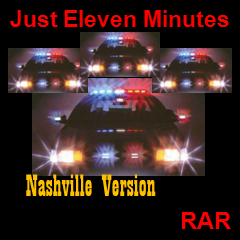
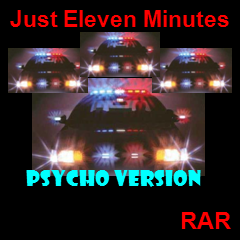
__________
IN THIS EDITION
RARADIO
(Click here)
New Releases on
RARadio:
"Darkness" by
Leonard Cohen; "Sweetbread"
by Simian
Mobile Disco and "Keep You"
from Actress
off the Chronicle movie
soundtrack;
"Goodbye to Love" from
October Dawn; Trouble in Mind 2011
label sampler;
Black Box Revelation Live on
Minnesota Public Radio;
Apteka "Striking Violet";
Mikal Cronin's "Apathy" and "Get
Along"; Dana deChaby's
progressive rock
___________ |
|
|
|
MUSIC
LINKS |
| "The Musical Meccas of the World" |
| LOS
ANGELES |
| SAN
FRANCISCO |
| NEW YORK
CITY |
|
NASHVILLE |
|
CHICAGO |
|
AUSTIN |
|
DENVER-BOULDER |
|
MINNESOTA |
|
SEATTLE |
| NEW
ORLEANS
PHILADELPHIA
PORTLAND |
|
MEMPHIS |
|
PACIFIC
NORTHWEST |
|
FLORIDA |
|
INTERNATIONAL LINKS |
| UNITED
KINGDOM |
|
EUROPE |
| JAPAN |
|
SCANDANAVIA |
|
AUSTRALIA |
|
CANADA |
| ASIA |
| |
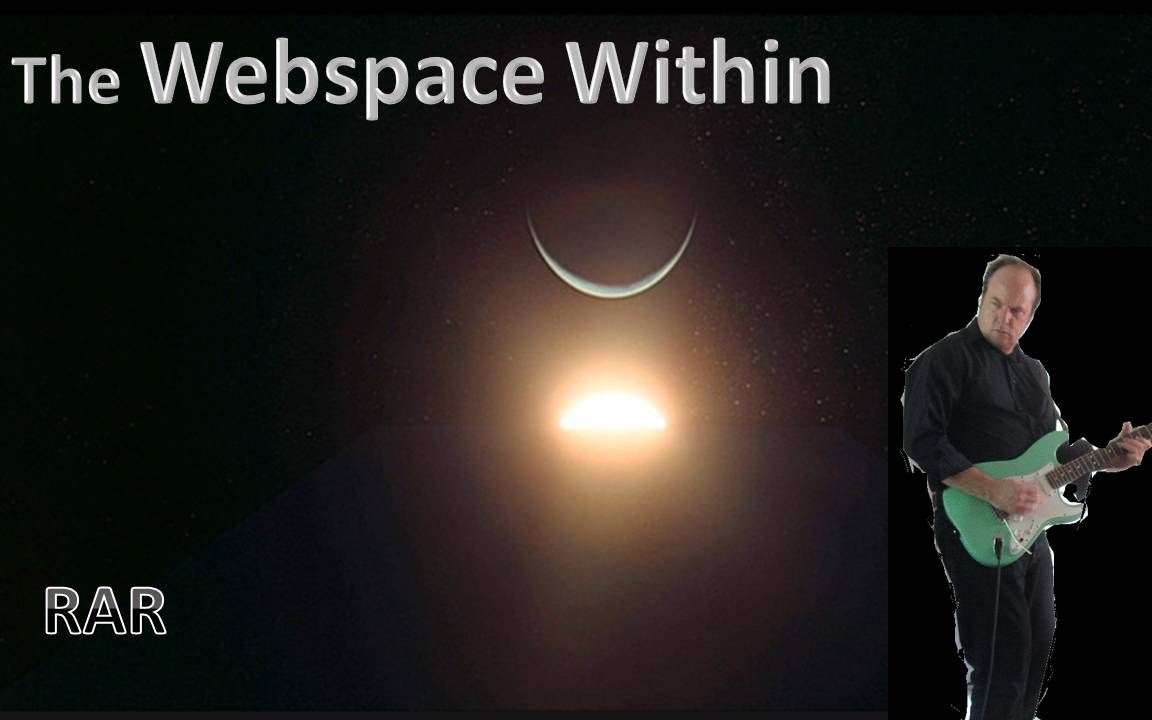
►Original Musical
Compositions and Select Covers
►Fiction and Non-Fiction
►Special Projects
►Essays
| |
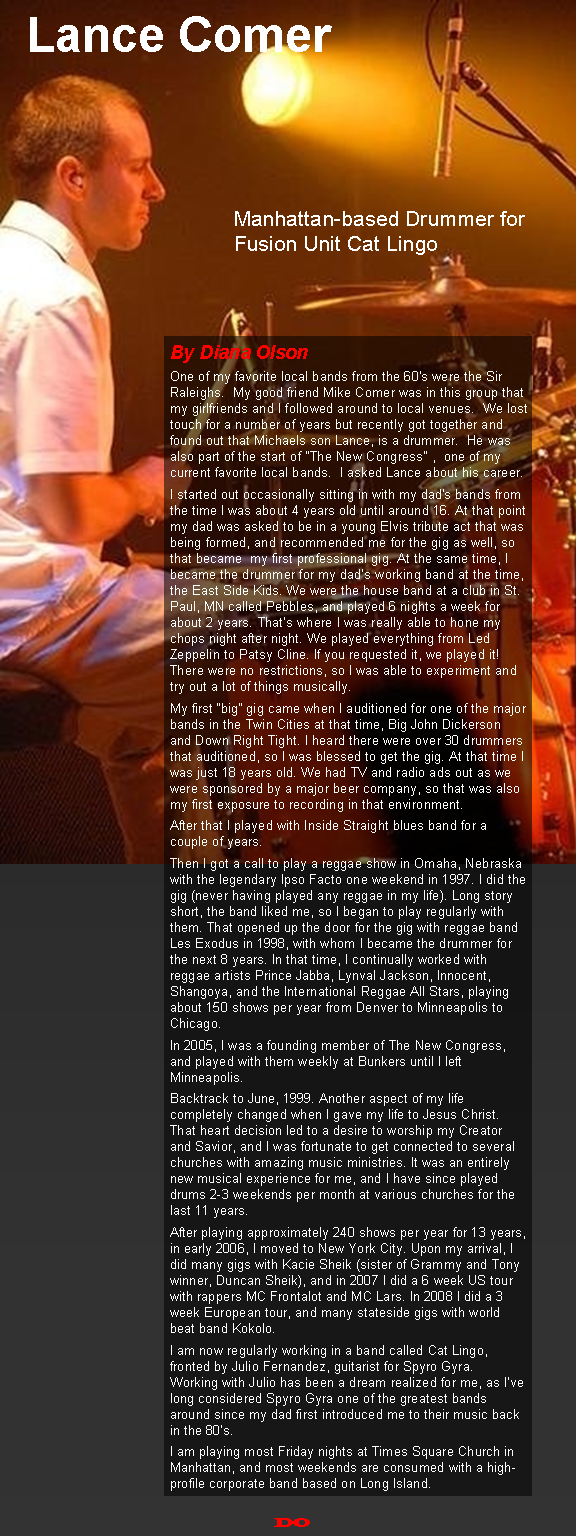
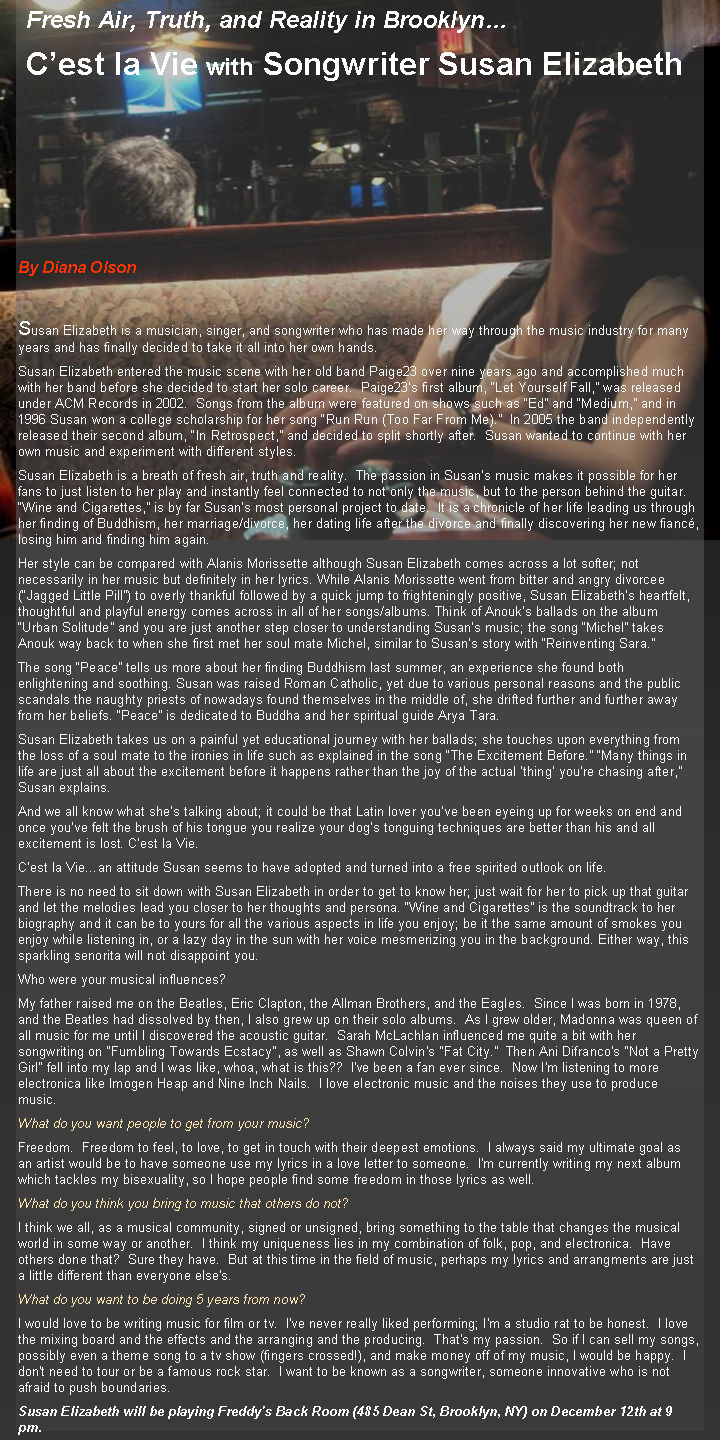
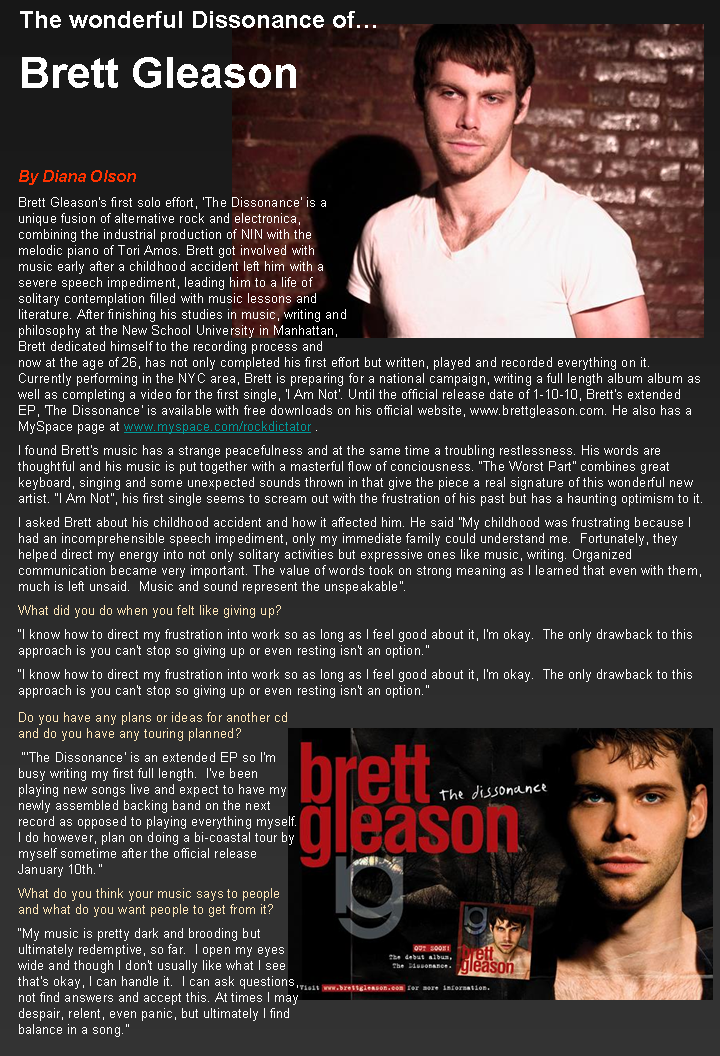
___________________________________________
INDIE POP


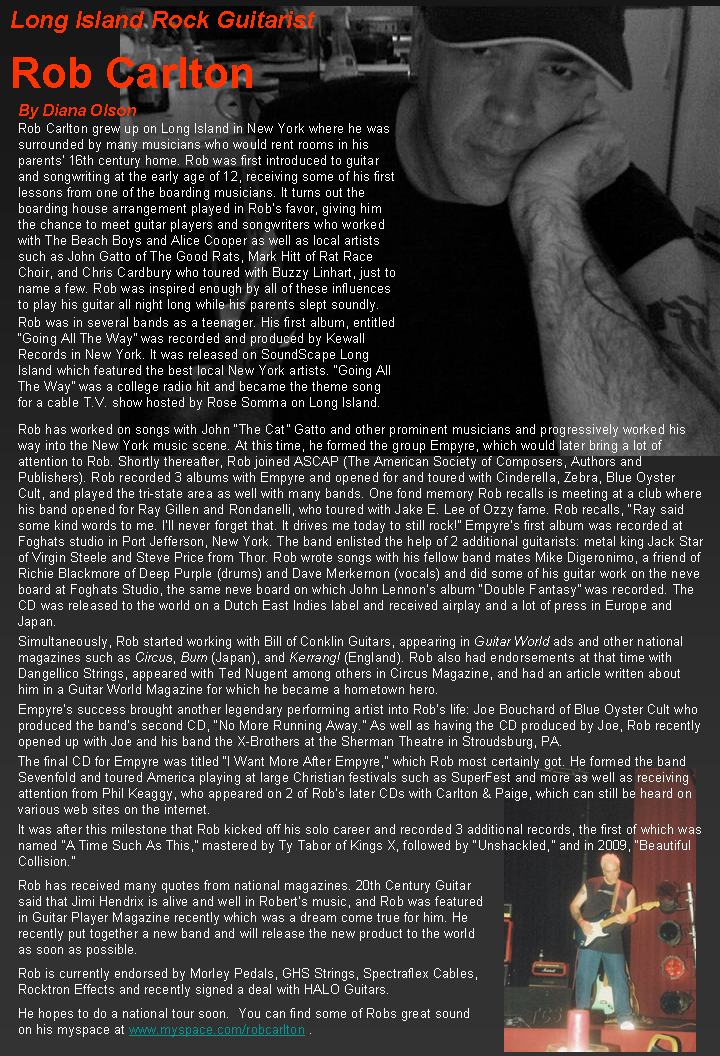
|
Kaki King
www.myspace.com/kakiking
KAKI
KING is a guitarist who went
through a door several years ago and began experimenting with not only her
acoustic-electric guitars, but also pedal and lap steel. She began doing that
Stanley Jordan fret tapping thing, essentially turning the fretboard of the
guitar into a keyboard. And on her most recent albums, Dreaming of Revenge
(2008) and ...Until We Felt Red, Kaki explores her vocal abilities.
Hers is an interesting journey to watch. There is a
thing that happens to truly talented musicians: they become bored with the
instrument they have mastered, at least within their own definition of what
mastery may mean. The vast majority simply stop forward progression as a player.
Most just carry the heavy weight of recreating their perfected sound, striving
to perform it every more cleanly. Some explore their creative urges laterally
through music arrangement and composition.
The Kaki King's of the world, who
reach that point and start coloring outside the lines, are few in number.
Stanley Jordan, best known for the fret-tapping technique that Kaki sometimes
uses, and slide master Sonny Landreth, come to mind.
These three prodigies hit that wall of mastery early
in their lives - Kaki King is still in her 20s - and then did the unthinkable:
they expanded their instruments. Stanley Jordan and Kaki King attack it as if it
is a piano. Sonny Landreth integrates slide and classic chord voicing
techniques. All three produce truly special sounds.
Certainly Kaki King's "experimental" sound is not
for everyone. Her extraordinarily delicate ambidextrous touch seems mostly to
produce beautiful FM Sunday brunch music that works well as soundtrack (August
Rush). A Georgia native, now a Brooklyn resident, she has an eccentric
quality that brings to mind some of the Appalachian geniuses the world has
known, notably Doc Watson. She seems other worldly, a charmed alien living an
out of body experience.
As a composer, her ideas are rich and beautifully
executed. She is a living tribute to all of the "jazz" guitar greats who have
come before, effortlessly employing run and rhythm ideas that are immediately
recognizable as classic and yet, done her way, read like expression. This
is the thing that sets her apart. She isn't just stringing together licks, but
rather painting with a sonic brush that bristles with the long, long plectrum
nails of her right hand and the smooth glissando of her left.
|

KAKI KING MP3:
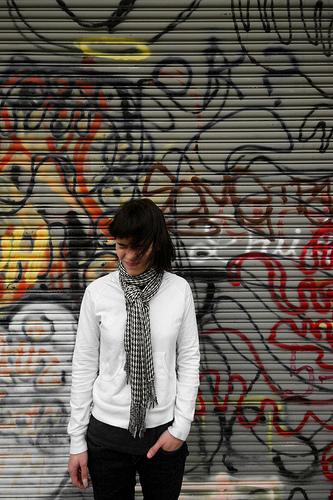
Click here to go to
Kaki King's MySpace site to hear MP3s.

KAKI KING
VIDEO:
Click here to go to YouTube.com for Kaki King video. |
|
Francis and the
Lights
www.francisandthelights.com
FRANCIS
AND THE LIGHTS are a New York City based band led by frontman Francis
Starlite. The band’s sound is propelled by two live drummers playing in
conjunction with sequenced percussion, balanced with intertwining guitar and
synth parts. The band was formed at Wesleyan University - their first show was a
performance of the posthumous Otis Redding record The Immortal Otis Redding in
its entirety. After secluding himself in Oakland, CA to write songs, Francis
Starlite drove cross-country in a decommissioned postal truck and formed the
current incarnation of the band in New York. The rehearsed for a full year
before unveiling themselves at a series of invitation-only shows at a white
fabric draped warehouse space featuring spring-loaded keyboards, young coconuts
and a chandelier that descended onto the dancefloor bearing champagne glasses.
They released the Striking EP in late 2007 and are currently recording a
follow-up.
|
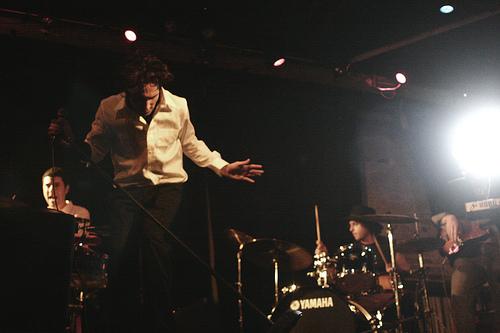 |
| FRANCIS
AND THE LIGHTS MP3:
Francis and the Lights'
"Striking" EP is available for download at
www.francisandthelights.com.
Click here to go to Francis
and the Lights' MySpace site to hear MP3s.
Click here to see Francis
and the Lights perform at Galapagos on YouTube.
WATCH
RARWRITER.COM FOR UPDATES ON FRANCIS AND THE LIGHTS
|
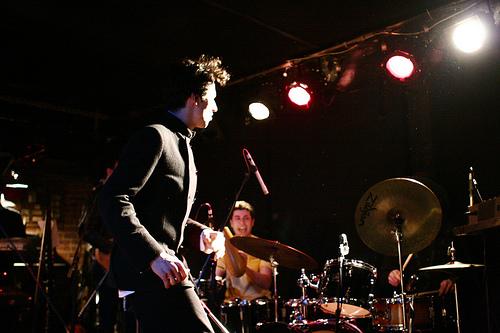 |
Francis and the Lights
Graduating From
Living to Ball Room
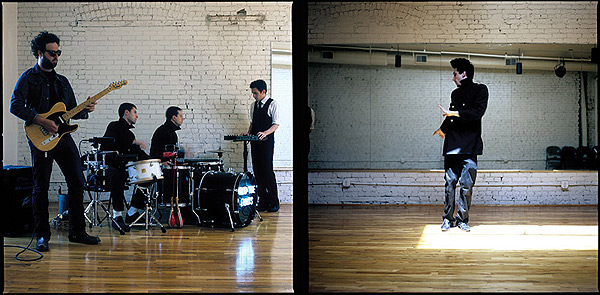
New York City, New York - Glam rockers
Francis and the Lights played the Bowery Ballroom last week,
completing the first phase of a metamorphosis that began a
couple years back in the apartment of their flamboyant front
man. Their Bowery show celebrated the two LPs that have issued
forth from the Francis collective.
Francis and the Lights introduced themselves with
a series of invitation-only shows in front man Francis Farewell
Starlite's apartment featuring young coconuts and a chandelier
that descended from the ceiling bearing champagne glasses. Out
of those shows, the band played increasing larger venues in New
York, and issued Striking at the end of 2007. In a busy
2008, they recorded and released the follow-up A Modern
Promise and filmed a single-take live audio video for "The
Top".
Francis and the Lights is making the following
tracks available for download for free.
1. "Striking" (from Striking) -
http://library.francisandthelights.com/audio/striking/striking.mp3
2. "Night Watchman" (from A Modern Promise)
-
http://library.francisandthelights.com/audio/amodernpromise/nightwatchman.mp3
3. "On A Train" (from A Modern Promise)
-
http://library.francisandthelights.com/audio/amodernpromise/onatrain.mp3
4. "Can't Tell Me Nothing" (Kanye West cover)
-
http://library.francisandthelights.com/audio/canttellmenothing.mp3
Rippin' at Bonnaroo
Sharon Jones and the Soul Difference
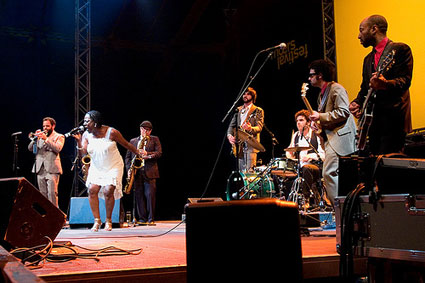 Brooklyn,
New York - Is it just me or has the redefinition of the
sub-genres within what we used to call "Rhythm & Blues" been
confusing? To find "R&B" as those of us over...oh, 39 have known
it, you would need to visit the Urban Adult Contemporary charts,
which are currently ruled by the likes of Raheem DaVaughn,
Keyshia Cole, Mary J. Blige, Beyonce and Alicia Keys. These are
musical people who come the closest to continuing the traditions
of predecessors like Aretha Franklin, Gladys Knight, and Marvin
Gaye. Brooklyn,
New York - Is it just me or has the redefinition of the
sub-genres within what we used to call "Rhythm & Blues" been
confusing? To find "R&B" as those of us over...oh, 39 have known
it, you would need to visit the Urban Adult Contemporary charts,
which are currently ruled by the likes of Raheem DaVaughn,
Keyshia Cole, Mary J. Blige, Beyonce and Alicia Keys. These are
musical people who come the closest to continuing the traditions
of predecessors like Aretha Franklin, Gladys Knight, and Marvin
Gaye.
On
the other hand, if you listen to youth-oriented stations these
days you find another type of music going under the "R&B" banner
carried by popsters like Rihanna, Usher, and Chris Brown, and
also there you get the crossovers like Kanye West.
Oh
Kanye West...
Kanye
just brought his elaborate stage show - the one where he
interacts with extraterrestrials - to Tennessee's Bonnaroo
festival, of all places, where he angered a crowd by going on
almost four hours late - significant, when your show is
scheduled to begin at 1:30 a.m. (Kanye wanted the late start. It
probably seemed like a cool idea to mount that surreal show in
the dark.) He was only half-way through his romp when the sun
came up to reveal a largely empty "house." Lesson: smoke and
mirrors and mud may not work all that well together, which
brings us back to the blurred distinctions in today's "race
music."
Much
of the new confusion stems from the dual definition of
"hip-hop," which as a musical style is a 4/4 beat with a feeling
that can be demonstrated by clapping once, wiping down your
forearms on the 3 and the 4 beats, and clapping again to restart
the cycle with the next measure. Add scratches and samples and
you have the foundation for hip-hop poetry. "Hip-hop," however,
is also a "life style" and under that umbrella you find "rap,"
which puts street poetry to soul, metal and rock, and all of the
variations of "R&B" and classic soul.
There
is, among all of that, precious little left of the type of
swampy, juke joint sweat, Bourbon and pot soaked "soul" that
used to be the province of now-departed rhythm kings James Brown
and Ike Turner. But wait! While the youth culture gorges on Lil
Wayne and Young Jeezy, there is a hurricane blowing out of
Brooklyn in the form of 52-year old Sharon Jones and her
band the Dap-Kings. Hers is a show you could mount in
minutes on any street corner in any town in the world and no one
who stopped to listen would walk away anything other than blown
away. Like Kanye West, Sharon just played Bonnaroo too, and no
one went away mad.
Sharon Jones is one of those rare transcendent artists who come
across as a force of nature as distinct in character as an
earthquake is from a wild fire. Listening to her, you realize
that she is doing all of the old familiar stuff, but with a
voice so pure and original that comparisons do not come to mind.
This the pure ore, the crude oil, the real stuff. This is what
it sounds like when you hear talent without artifice.
Click here to go to Sharon Jones' MySpace and see if I'm
not right. - RAR
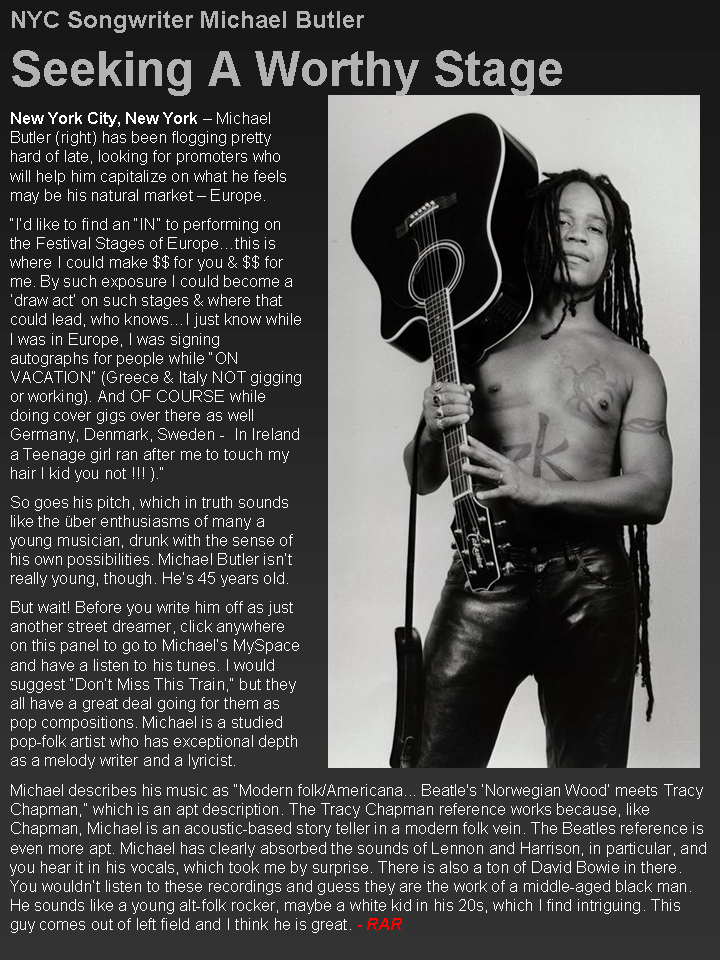
|
The Raveonettes
www.theraveonettes.com
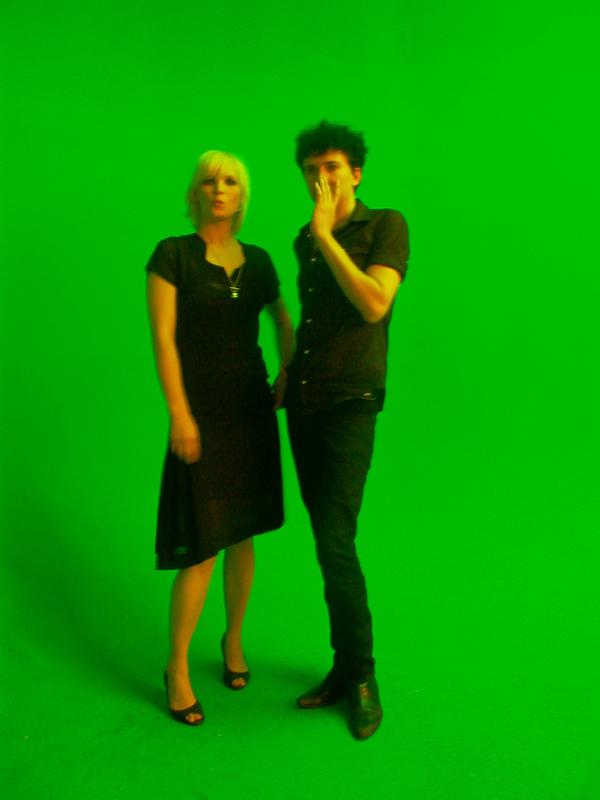 The
Raveonettes are originally a Danish pop duo consisting of Sune Rose
Wagner (on guitar, instruments, vocals) and Sharin Foo (on bass and vocals).
They now make their homes in New York City and Los Angeles. Their music is
characterized by close two-part vocal harmonies inspired by The Everly
Brothers[citation needed], coupled with hard-edged electric guitar overlaid with
liberal doses of noise. Their songs juxtapose the structural and chordal
simplicity of 50s and 60s rock with intense electric instrumentation, driving
beats and often dark lyrical content, similar to another of the band's
influences, The Velvet Underground. "We are not scared of being blunt about
what the references are in our music," said Sharin Foo. "For instance,
if you look at our name, The Raveonettes, it's a complete direct reference to
The Ronettes and Buddy Holly Rave On. So, in that sense, we're pretty clear
about it." - Wikipedia The
Raveonettes are originally a Danish pop duo consisting of Sune Rose
Wagner (on guitar, instruments, vocals) and Sharin Foo (on bass and vocals).
They now make their homes in New York City and Los Angeles. Their music is
characterized by close two-part vocal harmonies inspired by The Everly
Brothers[citation needed], coupled with hard-edged electric guitar overlaid with
liberal doses of noise. Their songs juxtapose the structural and chordal
simplicity of 50s and 60s rock with intense electric instrumentation, driving
beats and often dark lyrical content, similar to another of the band's
influences, The Velvet Underground. "We are not scared of being blunt about
what the references are in our music," said Sharin Foo. "For instance,
if you look at our name, The Raveonettes, it's a complete direct reference to
The Ronettes and Buddy Holly Rave On. So, in that sense, we're pretty clear
about it." - Wikipedia
|
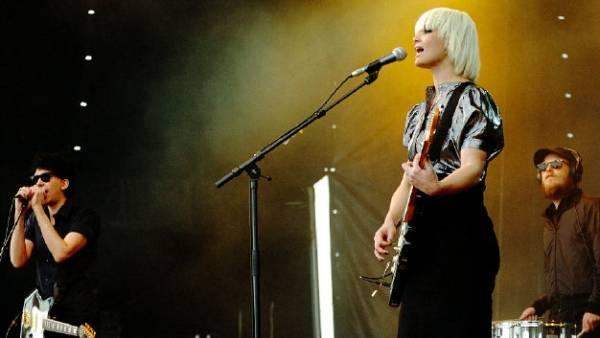
The Raveonettes playing Beat Day in
Copenhagan, 2007
|
| THE
RAVEONETTES MP3:
 Studio
albums: Studio
albums:
Whip It On (2002)
Chain Gang of Love (2003)
Pretty in Black (2005)
Lust Lust Lust (2007)
 Hit
singles: Hit
singles:
2002 "Attack of the Ghostriders" #73 UK
2003 "That Great Love Sound" #34 UK
2003 "Heartbreak Stroll" #49 UK
2004 "That Great Love Sound" (Re-issue) #52 UK
2005 "Love in a Trashcan" #26 UK
2007 "Dead Sound" (7" Only)
2008 "You Want The Candy" #15 UK Indie (7" Only)
Click here to go to The
Raveonettes MySpace site to hear MP3s.
Click here to see The
Raveonettes perform "That Great Love Sound" on YouTube.
WATCH
RARWRITER.COM FOR UPDATES ON THE RAVEONETTES
|
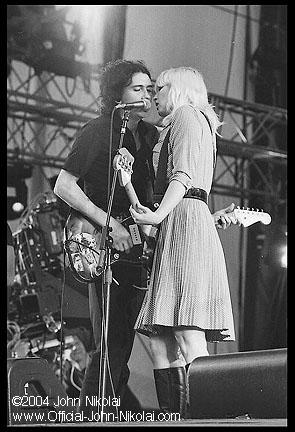 The
duo met in Copenhagen and, after forming the band, began recording Whip It
On at Once Was & Sauna Recording Studio, a former Sony Studios
facility. They booked the studio for three weeks during non-session down
time late in 2001 and handled all production chores by themselves. Adding
guitarist Manoj Ramdas and jazz drummer Jakob Hoyer, the Raveonettes
booked one of their first gigs at the SPOT festival in Aarhus, the second
largest city in Denmark. The
duo met in Copenhagen and, after forming the band, began recording Whip It
On at Once Was & Sauna Recording Studio, a former Sony Studios
facility. They booked the studio for three weeks during non-session down
time late in 2001 and handled all production chores by themselves. Adding
guitarist Manoj Ramdas and jazz drummer Jakob Hoyer, the Raveonettes
booked one of their first gigs at the SPOT festival in Aarhus, the second
largest city in Denmark.
Officially the band was discovered by
Rolling Stone editor David Fricke at the SPOT festival and his rave review
of them immediately resulted in a number of offers from the major labels.
Unofficially the band discovered that David Fricke would be present at the
SPOT festival, and they rushed a band together and headed for the
festival.
Whip It On (in which every song was under
three minutes and in the key of B-flat minor) was named "Best Rock
Album of the Year" at the Danish Music Awards (Denmark's Grammy
equivalent) on March 1, 2003 while the Raveonettes were picked by Rolling
Stone and Q Magazine as being among the harbingers of the "Next
Wave" of contemporary music.
In 2006 Blender named Sharin Foo one of
rock's hottest women, alongside Courtney Love, Joan Jett, and Liz Phair. -
Wikipedia |
|
The Panda Band
http://www.thepandaband.com/
THE
PANDA BAND is a transplant to Brooklyn from Perth, Australia and a
tremendous addition to the NYC scene.
(From their website) - The Panda Band
could be best described as art-tech-indie-pop. Art: because of their crafty
arrangements – tech: because they play with effects, keys and samples –
indie: because by choosing to run their own label, they are in the drivers seat
– pop: because they are big on catchy, layered melodies and sing-a-long bits.
You could also throw ironic, vaudevillian, intelligent and addictive into the
adjective stew, but we wont so pretend that we didn’t write this bit.
As the follow up to their 2005 EP "Sleepy
Little Deathtoll Town", The Panda Band independently released their first
album This Vital Chapter (we’re almost not even here) in Australia
(August 2006) where it has been met with critical acclaim from press such as
Rolling Stone, Sydney Morning Herald, The Melbourne Age and various street
press. National radio station Triple J selected it as their feature album and
presented the August promotional tour, which had sold out shows in Melbourne,
Sydney, Adelaide and Brisbane.
|
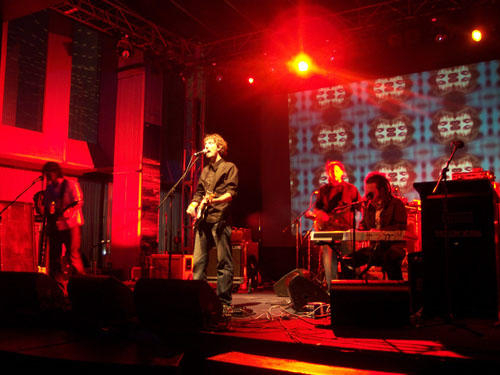
|
| THE
PANDA BAND MP3:

Click here to go to The
Panda Band's MySpace site to hear MP3s.
The Panda Band's This Vital Chapter has, in
the eyes and ears of some music critics, put them in a league with those
Canadian darlings Arcade Fire. Click here to read a review of This
Vital Chapter.
|
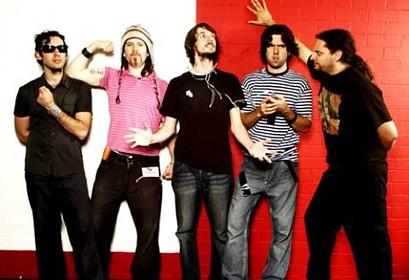 |
|
Langhorne Slim www.langhorneslim.com
LANGHORNE
SLIM is a young folk singer, born Sean Scolnick on August 20,
1980, based out of Brooklyn, New York. Originally hailing from Langhorne,
Pennsylvania, he graduated from the Conservatory of Music at Purchase College,
part of the SUNY system.
He
began to gain public notice through several years of touring with the
Trachtenburg Family Slideshow Players and an appearance at the Bonnaroo Music
Festival. His song Electric Love Letter was recently number 5 on the Rolling
Stone editor's top ten picks. The song was also in the movie Waitress. He has
recently been seen on tours with Cake, The Avett Brothers, Murder By Death,
Jeffrey Lewis, The Violent Femmes, Lucero, and Rocky Votolato.
In
2006, Langhorne Slim and the War Eagles signed to V2 Records. For one EP (Engine
EP, 2006) and an LP due out in early 2007. However, after V2 folded on the deal
regarding the highly anticipated release, the band signed to Kemado Records, and
have selected a release date of April 29th, 2008 for the self-titled,
full-length LP.
A
Langhorne Slim Daytrotter Session was released on October 9, 2006.
Langhorne
Slim's band the War Eagles consists of Paul Defiglia on bass and Malachi
DeLorenzo on drums. - Wikipedia
|
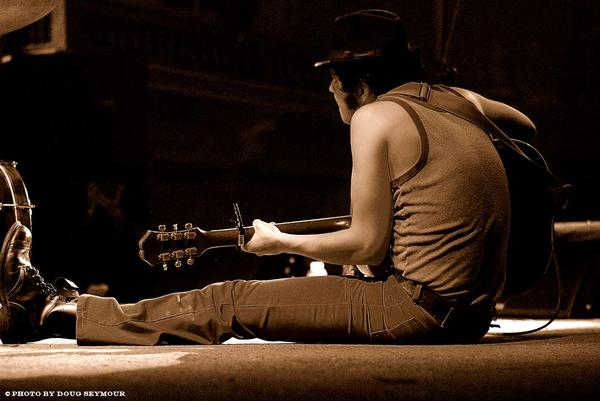
Photo: Doug Seymour
WATCH RARWRITER.COM FOR
UPDATES ON LANGHORNE SLIM
|
| LANGHORNE
SLIM MP3:
Go to the Langhorne
Slim MySpace site to hear MP3s.
|
|
LIVE
PERFORMANCE REVIEW |
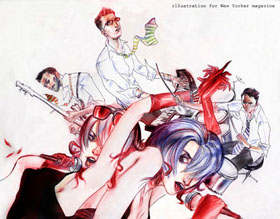 Art
reprinted from The New Yorker Art
reprinted from The New Yorker |
|
THE
FABULOUS ENTOURAGE
at The Annex, New York City,
March 21, 2008
at
9:00pm |
|
by Bryan Clark
Dance party band The
Fabulous Entourage made their thrilling return from an eight-month
hiatus last night at The Annex, playing a slim nine-song set which
featured three tunes from their 2006 CD Play
Nice Now, two newer songs that can be heard on their website, an
unrecorded live favorite, a new arrangement of one member’s solo work, a
brand new number, and a cover of a the title song from Cannonball Run II.
They started on time,
they didn’t bitch at the soundman about their monitor mix, and they all
but did away with the theatrical costuming of performances past.
(The day-glo tape on the men’s clothing was not in sight, and the
girls looked ready for an ordinary night of clubbing with the single
exception of Pamela Quinn’s green wig.)
All troubling signs, it seemed.
But unlike the result when KISS took off the makeup and revealed
that there was simply nobody home, this streamlined and straightforward
Entourage incarnation revealed an always-enthralling band which is
debating its own future as it teeters on the outer edge of its prime.
The standard Entourage
opening “Theme Song”, with its refrain of “We’re gonna satisfy,”
indeed continues to satisfy, especially when the shrieking crowd noises
are for real (as they were last night) and not canned (as they are on the
sole unfortunate moment of the album).
The band looked slightly unsure of themselves within seconds of
starting to play, and the smirks and giggles that they exchanged
throughout the number – and occasionally throughout the show – seemed
to veer between the excitement of playing together again and the search
for who had just played the wrong chord.
By the end of the opening
number, though, they had gained their footing, along with the tremendous
approval of the loyal crowd. And
then they pulled out “The Man Who Never Died,” one of the few tunes in
their repertoire which cannot be found on CD or mp3, although a brief live
clip from a previous show can be located on YouTube.
This number is reminiscent of their obscure EP “I Smell Danger”
from their equally obscure early days as a duo with a drum machine and a
proclivity for superhero musical fantasy performing in clothing inspired
by Madonna via the New York Dolls. But
the epic hero lyric “Gave up trying in the '20s/ Gave up feeling in
1945/ Gave up hoping in the 80s/ When I realized that I never would die”
now feels more overtly connected to the contemplation of growing out of
their 20’s and contemplating their lives ahead.
“
Midnight
Cowboy” was the usual crowd pleaser, as was the more recent “Out of
Beer.” The latter tune has
been through a tough birthing process in the web-released demos, including
a misguided version which featured a flute and an equally challenged mix
which was overwhelmed by synth pop keyboard stylings.
Fortunately, the song has now found its feet live, with the help of
a delightfully rough guitar part by vocalist Libby Winters.
|
In a typically
unsurprising surprise, the Entourage inexplicably covered the main title
theme from the movie Cannonball Run II, dedicating it to longtime groupie Gideon Levy.
They were joined on this number, and others, by Jimmy Owens on
saxophone. His overall
presence made little sense in the show and generally undercut the power of
the core quintet rather than supporting it, but his specific appearance at
this point – from the balcony, dressed as Jesus Christ (in celebration
of Good Friday) – was welcome, especially as it was a crucial reminder
of the spectacular drama and irreverence of the Entourage in their heyday.
“Revolution / Keep on
Movin,’” despite the annoying slash in its title, is inarguably their
strongest dance floor anthem, and will be the anchoring number of any
Album #2 that they might ever decide to record.
It drives hard and happy, even in its arresting
throwaway lyric “Dance tonight for tomorrow we die.”
The set took a brief dip
during “Deepest Cut,” not-so-successful reworking of “Don’t Come
Crawling” from keyboardist Kyle Jarrow’s rock musical Love
Kills, followed by the new number “Don’t Look Back / Forget Her
Face.” Bassist Travis
Chamberlain, amusingly outfitted with a pair of Kevin DuBrow prison-stripe
pants, noted with a gleeful threat of reunion-as-farewell, “This is the
only time you’ll ever hear this song.”
If true, that won’t be the greatest loss to the repertoire, as
the lyrics were tired (“I’m not broken” felt like a rehash of the
superior song “Save Me,” with its arresting lyric “I am a broken
person”) and the tune unmemorable.
But the gig suddenly
roared back up to speed with the Entourage masterpiece “Perry’s
Dream,” which provided the only glimpse of drummer Perry Silver on the
tiny stage when he rose from the kit to play the familiar sticks-on-the
wall section. The girls’
vocal “Just keep on dreaming that dream/Things are just as bad as they
seem” was as goosebump-inducing and Beatlesque as ever, yet Jarrow’s
final refrain “Let me sleep forever” was shocking in its reiteration
of the looming rumor that the band is calling it quits, especially as it
became clear that this would be the final song of the night.
After the show, Jarrow
explained that the band members have all gotten more involved in their
other pursuits during the “hiatus,” including acting, directing,
writing, and – gasp! – other bands.
So now they’re “trying to figure out how to stay together and
keep playing now and then, given the changes in everyone’s life.”
It certainly sounds like the Entourage is preparing to pack itself
away as a nostalgic recollection of youthful good times.
Its fans were plainly not interested in this plan, chanting
“Encore!” even as the band was packing up and the sound guy had
already left. If the Fabulous
Entourage really will “keep playing now and then,” I suggest you make
your booking for your thirtieth birthday party now.
Or your thirty-fifth. Forty,
anyone? Yes, guilty as
charged.
|
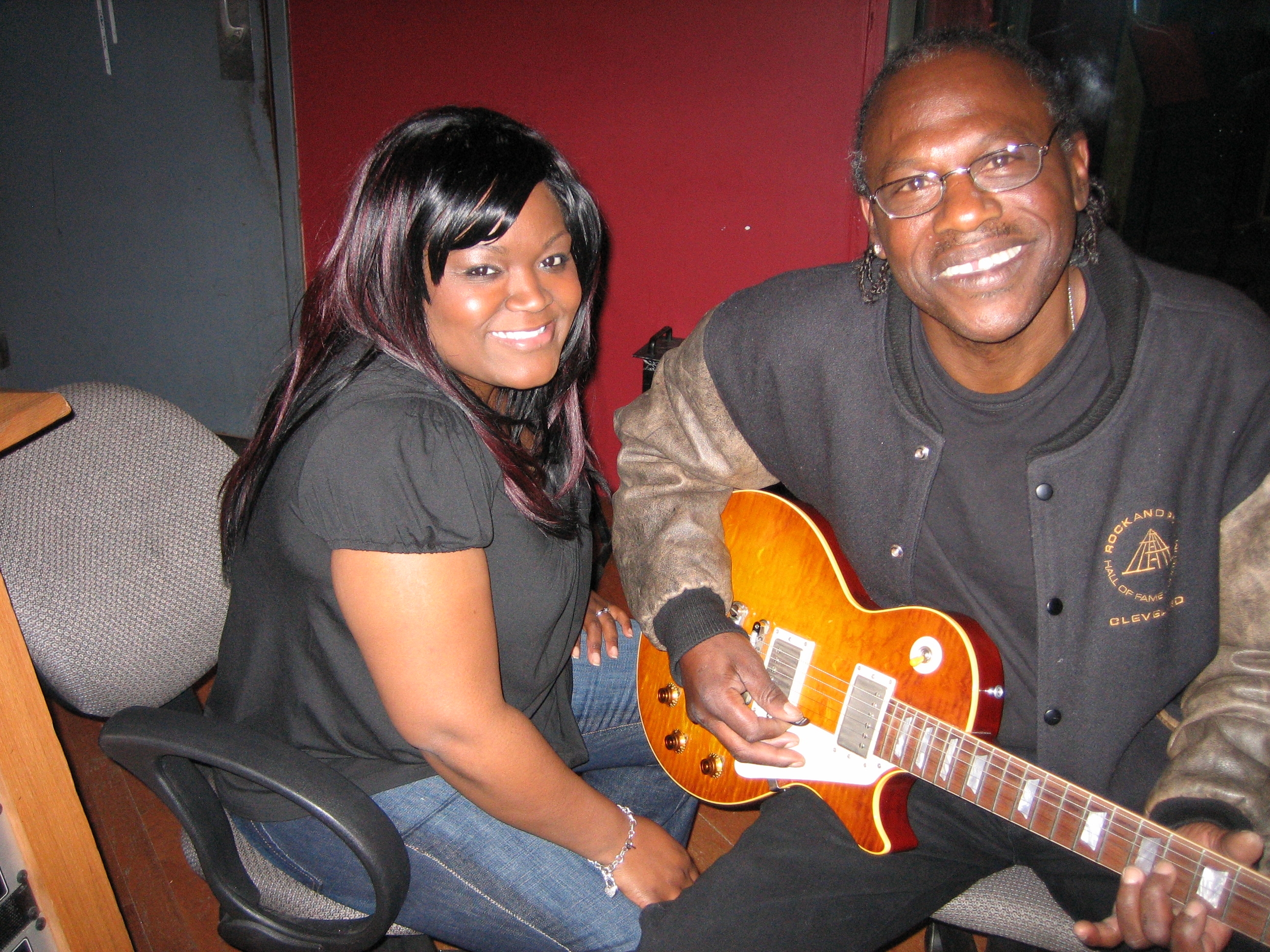 Joe Louis
Walker - Witness to the Blues Joe Louis
Walker - Witness to the Blues
ABOVE: Photographer John Hahn took this shot of
Shemekia Copeland and Joe Louis Walker during the
recording sessions Walker's Witness to the Blues LP,
recently released on Stony Plain Records.
___________________________
Westchester County, New York -
Former San Francisco-based bluesman Joe Louis Walker was
just a teenager when he burst upon the scene and set off on a
course that would put him in the company of legendary guitarist
Mike Bloomfield. And that wasn't all. During his formative
years, he shared stages with John Lee Hooker, Thelonius Monk,
The Soul Stirrers, Steve Miller and Jimi Hendrix.
Walker's rise to blues prominence
came to a self-imposed halt when mentor Bloomfield died at a
young age, prompting Walker to change his lifestyle. He dropped
out of the music business, enrolled in college, and earned
degrees in music and English. His musical performances were
still regularl, but with a decidedly different slant, as he
worked as part of the Spiritual Corinthians gospel group.
In 1985 he returned to the blues,
formed his stellar band The Bosstalkers, and signed to HighTone
Records, which released five albums before Walker moved to
PolyGram’s Verve/Gitanes label, where he recorded six albums.
Witness to the Blues is his debut release on the Stony Plain
label.
Produced by fellow Stony Plain
artist and award-winner Duke Robillard, Witness to the
Blues features a scintillating duet by Walker and Shemekia
Copeland in a reprise of the Peggy Scott & Jo Jo Benson R&B
classic, “Lover’s Holiday.” Stony Plain Records is distributed
in the U.S. by Koch Entertainment; in Canada by Warner Music;
and this CD has been licensed for release in Europe by Dixie
Frog.
With the stellar backing of
Robillard on guitar, Bruce Katz on keyboards, Jon Ross on bass,
Mark Teixeira on drums and a horn section of Doug James on sax
and Scott Aruda on trumpet, Joe Louis Walker explores the many
colors of the blues palette, including Delta and Chicago styles,
Memphis soul, gospel and even rockabilly. More than half of the
album’s 11 tracks were written by Walker, and he adds his own
distinctive interpretations to several covers, including
“Rollin’ and Tumblin’” and “Sugar Mama” (which includes special
guest Todd Sharpville on guitar).
Joe Louis Walker is a true blues
virtuoso whose skills as a singer, guitarist, songwriter and
producer have earned him a dedicated legion of fans around the
world. He’s recorded with B.B. King, James Cotton, Bonnie Raitt,
Taj Mahal, Steve Cropper, Ike Turner and Branford Marsalis,
among many others in a storied career that covers 18 solo
albums, two live DVDs and a number of compilations and guest
appearances. He’s played on two Grammy Award-winning albums and
won three Blues Music Awards (formerly known as W.C. Handy
Awards). In addition to his hot-ticket shows in the U.S., Walker
has become an international ambassador for the blues overseas,
having played at countless festivals throughout Europe, South
America, Australia, the Middle East and Asia.
Joe Louis Walker is managed by
David L. Jones of Cathouse Music, LLC (djones@cathousemusic.com)
and will tour extensively in both the U.S. and internationally
in support of Witness to the Blues.
|
|
KAMA
LINDEN
www.kamalinden.com
 Brooklyn
native KAMA LINDEN is an odd mixture of modern folk, showy
exhibitionism and social-political activism. A songwriter since the age of
11, Kama claims Pat Benatar and Patty Smyth as influences, but she is very
much her own creation; a hybrid that ping-pongs between confessional
acoustic yearnings and rhythmic dance club beats. She scored an Outstanding
Solo Artist nomination in the 2006 L.A. Rock City News Awards. Brooklyn
native KAMA LINDEN is an odd mixture of modern folk, showy
exhibitionism and social-political activism. A songwriter since the age of
11, Kama claims Pat Benatar and Patty Smyth as influences, but she is very
much her own creation; a hybrid that ping-pongs between confessional
acoustic yearnings and rhythmic dance club beats. She scored an Outstanding
Solo Artist nomination in the 2006 L.A. Rock City News Awards.
Kama released her LP Uninhibited in 2004, which has continued to perform solidly based on
radio play reports. The release is available on I-Tunes and tracks off the
CD have been used for television shows and movie soundtracks.
“Waiting” was the first single to garner attention, but the second
single “Crossed Over” may do even better. It was on the AC/Hot AC Main
Chart at #21, just below the Fray’s hit “How to Save A Life.” It has
been #15 on the AC/Hot AC Top 30 Indie Chart, just above Aaron Neville,
#17 in the AC/Hot AC Top 20 Central U.S. Region Chart, #47 on the Top
College Chart, and has also shown up on Hot AC land even Country stations.
She has supported the release with tours in the U.S.
and Europe.
Equally
impressive to her success with the LP is her ongoing work with a variety
of charitable organizations. In the past months she has performed benefits
to aid the suffering in Darfur, played an MS Benefit at the Muddy Cup on
Staten Island in Honor of Tem Schlief for Life, performed at an AIDS Rock
concert, and has performed every year since 2002 for the Blankfest
organization, which collects blankets for the homeless.
|
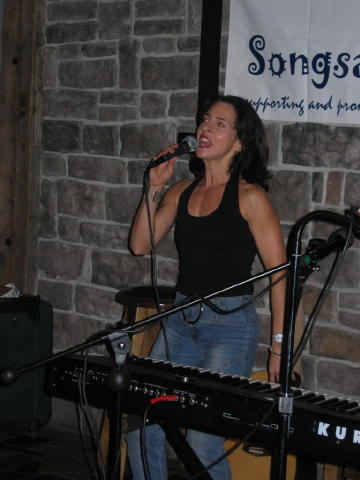 |
|
KAMA
LINDEN MP3:

Kama
Linden MP3s can be heard on her MySpace website at www.myspace.com/kamalinden
|
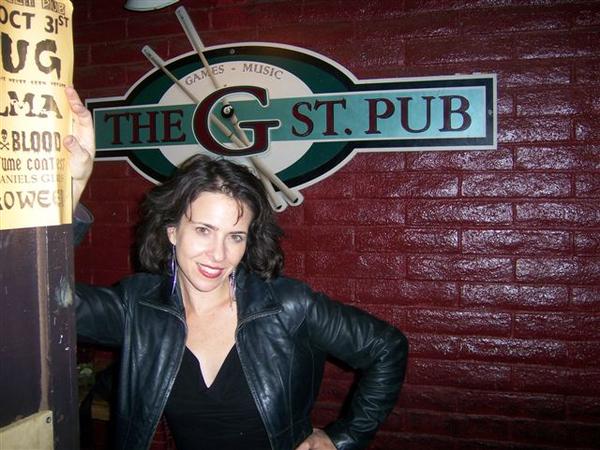
|
|
__________________________________________________
How Do You Get to Carnegie
Hall?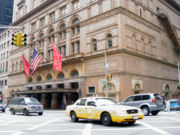
You Might Just Click On
CarnegieHall.org
New York City, New York
- When steel baron Andrew Carnegie anteed up in 1890 to begin
construction on a performance space for the Oratorio Society of
New York and the New York Symphony Society, on whose boards he
served, he probably knew that he was creating something iconic.
Carnegie had, after all, been populating the world with
"Carnegie libraries" (the first was in his native Scotland) for
the previous decade, and as one of the industrial age's richest
men his personal legacy would live on through his endowments of
learning and cultural facilities. Carnegie Hall, known as "Music
Hall" for its first couple of years before board members
encouraged Carnegie to lay more prominent claim, opened in
April, 1891, just a year after project launch.*
Carnegie Hall opened officially
in May, 1891 with a concert conducted by maestro Walter Damrosch
and composer Peter Ilyich Tchaikovsky.
Over the years, new works by
Dvořák (“New World” Symphony) and Gershwin (An American in
Paris), to name just a couple, have been premiered at Carnegie,
but it was not until 1990 that Carnegie actually began to
commission works for the hall. Carnegie Hall’s first two
commissioned works were Leonard Bernstein’s Opening Prayer,
premiered by the New York Philharmonic and Zubin Mehta in
December 1986, and Concerto for Piano and Orchestra
(commissioned jointly by Carnegie Hall, the Detroit Symphony,
and the American Symphony Orchestra League) by Ellen Taaffe
Zwilich, which was premiered at Carnegie Hall in January 1987
(from Wikipedia).
The Carnegie's commissioning
program is managed through the Centennial Commissioning Project,
which initially consisted of a series of thirteen commemorative
commissions honoring the Hall’s landmark hundredth season.
Thirteen major composers were matched with great artists to
prepare pieces for orchestra, chamber ensemble, and voice. The
success of that program has grown into an ongoing commission of
works ranging from solo to large orchestral pieces. There have
been over 125 jazz band arrangements commissioned since 1992,
and composers premiering works have included Elliott Carter,
David Del Tredici, Bill Frisell, Osvaldo Golijov, Michael
Gordon, Brad Mehldau, Meredith Monk, André Previn, Kaija
Saariaho, and Charles Wuorinen, among others.
There is an excellent series of
profiles of commission awardees available at the
Carnegie Hall Commissions page, which is well worth
visiting. You can listen to the works of commissioned composers
and read their project notes, many of which are fascinating.
_________________________________________________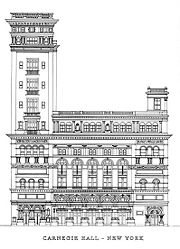
Architectural Expressions
of Man's Inefficiency and Dualistic Nature
* RAR NOTE: In putting this
piece together, I was taken by a number of things, not the least
of which was the extraordinary schedule for the construction of
Carnegie Hall, which was built in little more than one year
(1890-91).
When one looks at architecture
from that period, and considers the rapidity with which these
often monumental and ornate structures were built, one wonders
why more than a century later it takes sophisticated
jurisdictions like San Francisco decades to construct a public
works project. (It took 10 years to put in the I-690/Hwy-24
interchange at Walnut Creek, and the eastern span of the Bay
Bridge is still under construction 20 years after the Loma
Prieta Earthquake that set the project "into motion", so to
speak.) Certainly privately-funded projects like Carnegie Hall
continue to be developed on a more streamlined schedule, but
then compare the drawing of Carnegie Hall (right), with its
blend of Baroque, Florentine and Oriental design, with the $11
Billion CityCenter project currently under construction in Las
Vegas.
CityCenter is a 76-acre "city
within a city" concept that blends high-rise residential with
commercial enterprise (urban mixed use). The first phase broke
ground in 2006 and, beset by finance and labor issues, it is
scheduled to open at the end of this year, December 2009.
CityCenter is going to look like
this, seen in the December 2008 photograph at right, at least in
part. It has other towers that are equally...well, what would
you say? It is certainly Vegas-shiny and modern and its curvy
lines give it a sort of movement, which some (me) might find a
little queasy making. And isn't it too "thin" to stand? I'm
wondering if that isn't why they bent it round like that, to
give it some stability. On the other hand, this is Vegas! How
long does it have to stand? December 2008 photograph at right, at least in
part. It has other towers that are equally...well, what would
you say? It is certainly Vegas-shiny and modern and its curvy
lines give it a sort of movement, which some (me) might find a
little queasy making. And isn't it too "thin" to stand? I'm
wondering if that isn't why they bent it round like that, to
give it some stability. On the other hand, this is Vegas! How
long does it have to stand?
Jokes aside, the architectural
credits go to Gensler, the
executive architect overseeing the project; along with
architects of record HKS, Inc.
for the Block A CityCenter Casino & Resort and
surrounding facilities; Leo A. Daly
for the Vdara in Block B; and Adamson
Associates for Block C, which includes the Mandarin,
Veer, Crystals and Harmon structures.
It is obviously not comparable to
the Carnegie Hall project in any way, beyond being privately
funded. On the other hand, it is a building project that makes a
statement, and it is a statement one might note for its neurotic
impulse to scream "see me in all of my excess!"
By contrast, Carnegie put
together a "gift" that, while lacking shiny surfaces, stands
like a beacon 120 years after its opening, shining a light on
some fundamental changes that have taken place over that time in
human ethos and aesthetics. Somehow Carnegie's architect,
William Burnet Tuthill, managed
to marry awesome presence to exquisitely genteel decorative
design. The place seduces with masculine power and feminine
mystique, begging the viewer's eyes to follow its rich contours
and explore its generous recesses. It is one of Carnegie's
"peoples' places", born for the purpose of providing for the
furtherance of admirers of culture for generations to
come. It has a soul that is old yet vital.
Carnegie Hall
was, somewhat ironically, the last all-masonry construction of a
major building in New York City. Until an addition years after
its opening, there was no Carnegie steel, or steel of any kind,
in Carnegie Hall. It stands as a monument to quality, within and
without, an outcropping of something innately beautiful within
the human spirit, profoundly connected with "naturalness"
itself. It honors the expression it was designed to house,
humanity in its most refined forms.
--------------------------------------------------------------------------------
|
GO TO:
ARTIST NEWS
•
YOU
ARE ON A NEW YORK ARCHIVES
PAGE
|
 |
|
©Rick
Alan Rice (RAR),
March, 2012
|
|









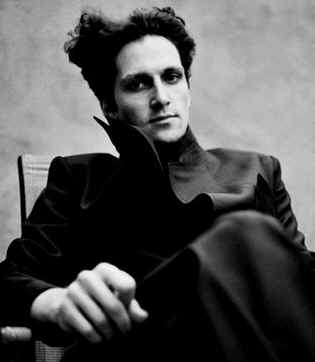














 Brooklyn,
New York - Is it just me or has the redefinition of the
sub-genres within what we used to call "Rhythm & Blues" been
confusing? To find "R&B" as those of us over...oh, 39 have known
it, you would need to visit the Urban Adult Contemporary charts,
which are currently ruled by the likes of Raheem DaVaughn,
Keyshia Cole, Mary J. Blige, Beyonce and Alicia Keys. These are
musical people who come the closest to continuing the traditions
of predecessors like Aretha Franklin, Gladys Knight, and Marvin
Gaye.
Brooklyn,
New York - Is it just me or has the redefinition of the
sub-genres within what we used to call "Rhythm & Blues" been
confusing? To find "R&B" as those of us over...oh, 39 have known
it, you would need to visit the Urban Adult Contemporary charts,
which are currently ruled by the likes of Raheem DaVaughn,
Keyshia Cole, Mary J. Blige, Beyonce and Alicia Keys. These are
musical people who come the closest to continuing the traditions
of predecessors like Aretha Franklin, Gladys Knight, and Marvin
Gaye. 


 Studio
albums:
Studio
albums: Hit
singles:
Hit
singles: The
duo met in Copenhagen and, after forming the band, began recording Whip It
On at Once Was & Sauna Recording Studio, a former Sony Studios
facility. They booked the studio for three weeks during non-session down
time late in 2001 and handled all production chores by themselves. Adding
guitarist Manoj Ramdas and jazz drummer Jakob Hoyer, the Raveonettes
booked one of their first gigs at the SPOT festival in Aarhus, the second
largest city in Denmark.
The
duo met in Copenhagen and, after forming the band, began recording Whip It
On at Once Was & Sauna Recording Studio, a former Sony Studios
facility. They booked the studio for three weeks during non-session down
time late in 2001 and handled all production chores by themselves. Adding
guitarist Manoj Ramdas and jazz drummer Jakob Hoyer, the Raveonettes
booked one of their first gigs at the SPOT festival in Aarhus, the second
largest city in Denmark.




 Art
reprinted from The New Yorker
Art
reprinted from The New Yorker 






 December 2008 photograph at right, at least in
part. It has other towers that are equally...well, what would
you say? It is certainly Vegas-shiny and modern and its curvy
lines give it a sort of movement, which some (me) might find a
little queasy making. And isn't it too "thin" to stand? I'm
wondering if that isn't why they bent it round like that, to
give it some stability. On the other hand, this is Vegas! How
long does it have to stand?
December 2008 photograph at right, at least in
part. It has other towers that are equally...well, what would
you say? It is certainly Vegas-shiny and modern and its curvy
lines give it a sort of movement, which some (me) might find a
little queasy making. And isn't it too "thin" to stand? I'm
wondering if that isn't why they bent it round like that, to
give it some stability. On the other hand, this is Vegas! How
long does it have to stand?